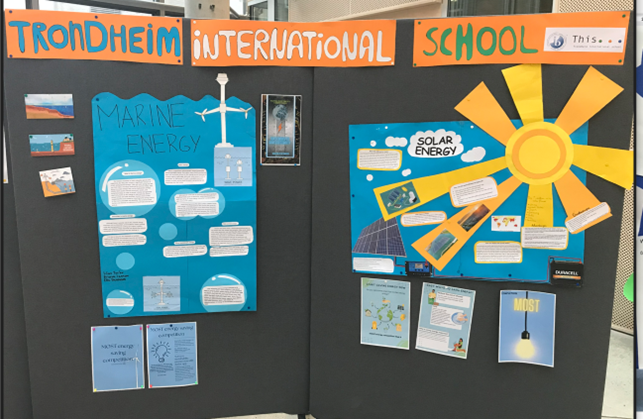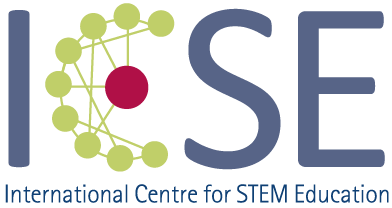MOST Best Practices Autumn 2022- Spring 2023
Year 9 students (MYP9) and their teachers from Trondheim International School wanted to find a way to motivate the local community to save electricity. The project involved both students and students’ families. 21 students (12 female) and 3 (1 female) teachers did participate in the project. With 39 external participants from the community, a total of 60 people were involved in this SCP.
They organized their project in four phases:
1. Enquiry: Learn about energy
In the first phase of the project, a professor from the University of Trondheim was invited to give a lecture on different forms of sustainable energy. The students were split up in groups. Each group enquired more about one type of sustainable energy and organized knowledge and facts that had been obtained. They prepared presentations and shared their knowledge with other students and teachers at the school by presenting the results in the form of posters on a dinner arranged for the school community.
2. Action: Energy competition
They decided to conduct an energy competition where the students’ own families and others were challenged to save energy and contacted the company Ducky for cooperation. Ducky is a young company run by young people with knowledge and commitment, and the company offers an app-based solution that let organizations quickly and easily set up challenges and help individuals, organizations and schools to monitor, learn about and improve their carbon footprint.
Each student was to ensemble their own team of 5 external members from family, friends, neighbors, etc. 258 were invited to join the competition. 60 chose to participate, forming 43 teams. This gives a participation rate of 23 %.
The competition the Energy Reduction Challenge lasted 14 days. The teams were to compete to save as much energy as possible. The students could monitor the progress of the competition during the whole period. After one week the students launched a planned and prepared campaign to raise attention to the importance of saving energy, with tips on how to do it.

Photo: Ragnhild Lyngved Staberg
3. Reflection
The students used the results generated by the Ducky app as a starting point for their own analysis and reflection on the results. The analysis of data shows that the competition resulted in total savings of 2,700 kg CO2e (carbon dioxide equivalent), which is roughly as much as 270 trees absorb in one year. The various activities of the participants were logged and categorized under the UN Sustainable Development Goal labels.
The students identified winners of the competition, and the results of the competition were sent out to everyone who had participated.
4. Going Further
As a continuation, the students themselves chose two/three forms of energy for in-depth investigation. They formulated their research questions and planned their work further.
In their work, they evaluated their sources for information and documented their own research process. Perspectives and implications of their chosen types of sustainable energy were explored and presented by writing essays.
This is a success story because the students managed to point out the great potential for energy saving that follows when each person takes some simple measures in their everyday life, and that the sum of many small contributions becomes a large savings. Through a good collaboration with an external partner, Ducky, they gained access to both knowledge and tools. They acquired external expertise early in order to build their own knowledge and they managed to engage the local community to participate. They then passed on knowledge back to the participants, so that their SCP can have an effect beyond the two weeks of the competition.
Through the work in the final phase, they have built further knowledge about energy and energy sources and about the implementation of research projects.

“Wind Power”. Photo: Ragnhild Lyngved Staberg
